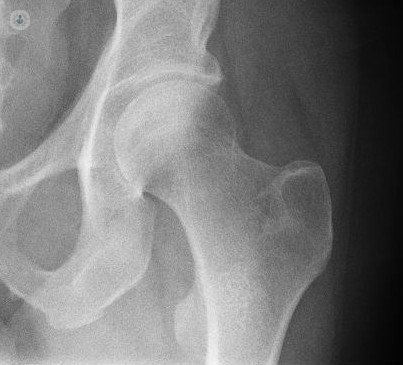How to identify hip osteoarthritis?
Written by:This degenerative disease lameness is detected by the sensation of pain, decreased mobility, and.

What is hip osteoarthritis
The orthopedic osteoarthritis defined as a degenerative process occurring in articular cartilage causing wear. Hip osteoarthritis can be primary or secondary.
- Primary. It is caused by joint use and aging. It may appear from 60 years and there are predisposing factors, genetic, form of the femoral head, overuse, sports professionally impact etc.
- High school. It is caused by rheumatic and metabolic diseases; congenital hip dislocation and dysplasia; sequelae of trauma; vascular diseases of the femoral head.
Symptoms of osteoarthritis of the hip
A patient found to have osteoarthritis of the hip beginning with the sensation of pain, decreased mobility, and lameness. The pain of osteoarthritis of the hip is characterized by:
- Pain at the start of the march: after the first steps usually subsides and allows walking a while, but later begins again, forcing the patient to rest. After a rest period usually improves.
- It is usually located in the groin area and upper thigh. You can even reach the knee.
- Decreases joint mobility: Initially it appears as a rigidity to begin to move up sagging.
- Produces limited range of motion hampering the activities of ordinary life such arrangement toenails, put the sock or half, sitting on couch, up or down stairs, into the tub, difficulty crossing your legs.
- Claudication or lameness, begins as mild or unapparent and time is becoming obvious pain, muscle atrophy and joint stiffness.
Age accentuated hip osteoarthritis
Osteoarthritis is a degenerative process in direct relationship with age. Primary hip osteoarthritis usually occurs from 60-65 years. However, secondary osteoarthritis can occur at any age because the cause is not only traumatic degenerative, rheumatic, vascular, congenital dislocation or dysplasia.
Atrosis hip surgery as a last
Before going to the surgery, you should always start a medical and rehabilitation treatment. Only one resorts to surgery when other treatments fail. Surgery fails to cure osteoarthritis, but the improvement or cure of symptoms. Therefore, there is no need for surgery time, especially prosthetic replacement surgery.
It will take place when, after a reasonable period of conservative treatment, the patient does not improve quality of life and not appropriate for their age and health conditions.
Surgery hip prosthesis involves complete joint replacement, both the acetabular component of the pelvis as the femoral head, creating a new joint similar to the hip size and mobility.


